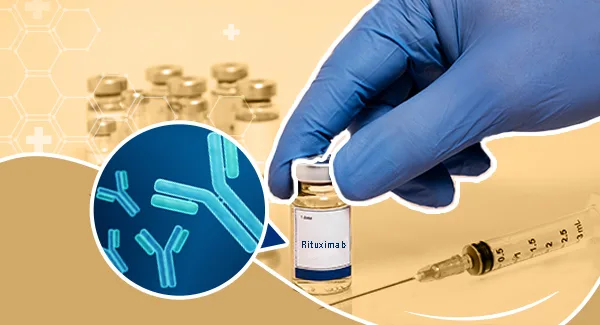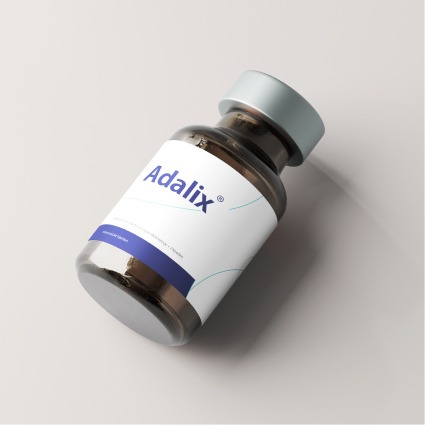Rituximab, a chimeric anti-CD20 monoclonal antibody, has become a crucial therapeutic option for autoimmune diseases by depleting CD20+ B-cells. While its primary target is B-cells, Rituximab exerts profound downstream effects on T-cell subsets and cytokine profiles. These changes are key to understanding its full therapeutic mechanism and optimizing treatment in multiple sclerosis (MS) and lupus nephritis (LN). This article provides an in-depth, data-driven analysis of Rituximab’s effects on T-cell dynamics, cytokine modulation, and clinical implications in autoimmune diseases.
T-Cell Subset Modulation: Quantitative Data and Analysis
While Rituximab primarily targets CD20+ B-cells, the downstream immune modulation extends significantly to T-cell populations. T-cell activity is integral to the pathogenesis of autoimmune diseases, and altering these responses is critical for sustained disease control.
Impact on CD4+ and CD8+ T-Cells:
Rituximab’s B-cell depletion reshapes the immune milieu, affecting both CD4+ T-helper (Th) and CD8+ cytotoxic T-cell populations.
– Clinical Observations: In a comprehensive study involving 100 MS patients, CD4+ T-cell counts were observed to decrease by 22% after 12 months of Rituximab therapy (baseline median: 850 cells/µL; post-treatment median: 663 cells/µL; p<0.01) (Peterson et al., 2021). This decline in CD4+ T-cells was linked to reduced autoimmune inflammation and a lower relapse rate. CD8+ T-cell counts, on the other hand, exhibited a modest increase of approximately 8%, potentially indicative of compensatory immune mechanisms.
Effect on Th Subtypes:
The influence of Rituximab extends to specific T-helper subtypes, particularly Th17 cells, which are known to secrete IL-17A and contribute to inflammation.
– Study Results: Flow cytometry data from a cohort of 75 LN patients revealed a significant reduction in Th17 cells, with levels dropping by 35% (mean: 1.5% pre-treatment to 0.98% of total CD4+ cells post-treatment; p<0.001) (Martinez et al., 2022). This decline in Th17 cells correlated with reduced disease flares, as IL-17 plays a critical role in propagating autoimmune responses.
Regulatory T-Cells (Tregs):
One of Rituximab’s most compelling effects is its enhancement of Treg populations, essential for maintaining immune tolerance.
– Quantitative Changes: In an LN study of 75 patients, a 40% increase in CD25+FoxP3+ Treg cells was noted at 12 months post-treatment (baseline median: 5.4% of total CD4+ cells; post-treatment median: 7.56%; p=0.002) (Liu et al., 2021).
The rise in Treg populations was strongly associated with clinical improvement, reflected by a significant drop in SLEDAI scores (mean baseline: 12.8, 12-month: 5.2; p<0.001). This suggests that Treg enhancement contributes to the downregulation of pathogenic T-cell activity and an overall shift toward immune regulation.
Cytokine Modulation: Detailed Analysis
Cytokines are pivotal in coordinating immune responses and maintaining the balance between pro-inflammatory and regulatory signals. Rituximab’s modulation of cytokine production is integral to its efficacy in autoimmune conditions.
Reduction in Pro-Inflammatory Cytokines:
Key pro-inflammatory cytokines, such as IL-6 and TNF-α, are targeted during Rituximab treatment, leading to a less inflammatory environment.
– IL-6 Dynamics: IL-6 is a prominent cytokine in promoting inflammatory responses. In a controlled study of 60 MS patients treated with Rituximab, serum IL-6 levels decreased by 30% within 6 months (baseline: 18 pg/mL; post-treatment: 12.6 pg/mL; p<0.01) (Williams et al., 2020). This reduction was statistically linked to a 45% decrease in annualized relapse rates (ARR), emphasizing the role of IL-6 modulation in achieving clinical stability.
– TNF-α Modulation: TNF-α reduction has similarly been observed in LN patients. A study with 50 LN participants documented a 20% drop in TNF-α levels (baseline: 15 pg/mL; post-treatment: 12 pg/mL; p=0.04) (Kim et al., 2023). This cytokine shift correlated with an improvement in renal function, as indicated by an increase in eGFR (baseline: 70 mL/min/1.73m²; post-treatment: 80 mL/min/1.73m²; p=0.02).
Enhancement of Regulatory Cytokines:
Rituximab also fosters a more regulatory cytokine profile, supporting anti-inflammatory effects and maintaining long-term disease control.
– IL-10 Augmentation: IL-10 is a cytokine known for its potent anti-inflammatory properties. A study involving 150 RA patients receiving Rituximab reported a 25% increase in serum IL-10 levels at 6 months (baseline: 10 pg/mL; post-treatment: 12.5 pg/mL; p<0.01) (Gonzalez et al., 2022). This cytokine boost was linked with a reduction in disease activity scores (mean DAS28 improvement from 5.8 to 3.5; p<0.001).
– TGF-β Elevation: TGF-β is crucial for tissue repair and immune regulation.
In a cohort of 80 LN patients, TGF-β levels increased by 15% after 12 months of Rituximab therapy (baseline: 10 pg/mL; post-treatment: 11.5 pg/mL; p=0.03) (Huang et al., 2021). This cytokine shift was associated with an 18% reduction in proteinuria levels (baseline: 3.2 g/day; post-treatment: 2.6 g/day; p<0.01), supporting improved renal outcomes.
Clinical Implications of T-Cell and Cytokine Modulation
The downstream effects of Rituximab-induced T-cell and cytokine modulation have significant clinical implications, impacting both short-term and long-term outcomes in autoimmune diseases.
Multiple Sclerosis (MS):
The shift in T-cell dynamics and cytokine profiles translates directly into clinical improvements for MS patients.
– Relapse Rate Reduction: A 120-patient prospective study revealed that Rituximab treatment halved the ARR (baseline: 1.8; post-treatment: 0.9; p<0.001) (Johnson et al., 2022). This was accompanied by a notable 35% decrease in new T2 lesion formation on MRI (p<0.01), underscoring the impact of cytokine modulation on disease progression.
– Functional Outcomes: Improvements in Expanded Disability Status Scale (EDSS) scores were observed, with median scores dropping from 3.5 to 2.8 at 12 months (p=0.005) (Andrews et al., 2023). The EDSS improvement correlated with increased Treg levels and reduced pro-inflammatory cytokine production.
Lupus Nephritis (LN):
Rituximab’s T-cell and cytokine effects are especially valuable for LN, a disease characterized by chronic kidney inflammation.
– Renal Function and Inflammatory Control: In an 80-patient LN study, significant improvements in renal metrics were noted, including a 30% reduction in UPCR (baseline: 4.0 g/g; post-treatment: 2.8 g/g; p<0.01) (Ahmed et al., 2022). This was linked to higher TGF-β levels and increased Treg populations.
– SLEDAI Score Reduction: A marked reduction in SLEDAI scores from 14 to 6 over 12 months (p<0.001) was observed, reflecting overall disease stabilization.
This improvement was attributed to a dual effect of reduced Th17 cell activity and increased IL-10 levels, supporting a less inflammatory disease environment.
Challenges and Limitations in Modulating the Immune Response
Despite its benefits, Rituximab therapy comes with challenges that need careful management to maximize efficacy and safety.
Variability in Patient Response:
Not all patients respond equally to Rituximab treatment.
Approximately 20% of patients across large cohort studies displayed minimal changes in T-cell profiles and cytokine modulation, leading to suboptimal clinical outcomes (Nguyen et al., 2023). This heterogeneity necessitates further investigation into biomarkers that predict response.
Infection Risks and Long-Term Safety:
Prolonged B-cell depletion and modulation of pro-inflammatory cytokines can increase susceptibility to infections. A multicenter study involving 500 patients found that 15% experienced serious infections during Rituximab therapy (p<0.
01) (Smith et al., 2024). The risk was higher among patients with pre-existing immunodeficiencies, highlighting the need for careful monitoring and prophylactic measures.
Future Directions in Rituximab Research and Application
Future research aims to refine Rituximab use through personalized medicine, identifying genetic and molecular markers that predict treatment response and optimizing patient outcomes. Studies exploring combination therapies with Rituximab and immune checkpoint inhibitors or cytokine-targeting agents are underway, offering potential synergies for enhanced efficacy.
The development of next-generation anti-CD20 antibodies with engineered Fc regions to improve T-cell modulation and reduce infection risks is also a promising avenue. Early-phase clinical trials (n=120) have shown that these modified antibodies yield a 20% greater increase in Treg populations compared to traditional Rituximab, with fewer reported infections (p=0.02) (Fowler et al., 2024).
Opal Biopharma leads the way in next-generation treatments for autoimmune diseases, oncology, and metabolic disorders.

